Everything You Need to Know About Ralph Lauren’s Biggest Sporting Moments & Influence on Sports Style
- By Aaron Howes in Style
Credits:
Sports Heritage
Off to the Races (& Beyond)
- Contributing Writer: Alec Banks
- All images supplied from Ralph Lauren’s archive
Wimbledon
- Photographer: Louis Bever
- Producer: Ufuk Inci
- Styling: Atip W.
- Styling Assistant: Sophie Casha
- Hair & Make-Up: Andjelka
- Models: Sam, Twigy, Charlie, Nelly, & Cam
General
- Editor: Aaron Howes
- Creative Direction: Shane Gormley
- Executive Producer: Ufuk Inci
- Project Manager: Johanna Gerhardt
- Project Manager: Rachel Bigelow
- Digital Design: Pieralberto Faggian
- Interactive Development: Katerina Vaseva
Sporting by Design
Dropcast
- Hosts: Jian DeLeon and Noah Thomas
- Guests: Kumasi Sadiki of The Good Company and German Nieves
- Producer: Sonia Manalili
- Talent Relations Manager: Meagan Keeler
Behind the Bear
- All images supplied from Ralph Lauren’s archive
Alternative Sports
Land of the Rising ‘Lo
- Model: Yu Tang
- Production: AtoM
- Producer: Mari Murakamie
- Coordination: Taka Arakawa
- Director: Yusuke Ishida
- Photographer: Lorenzo Dalbosco / Adi Putra
- Sound design: Takaya Takumi
Polo Skate
- Director: verytaste
- Camera: Nick Castle
- Photography: Johnny Castle
- Video Editor: Rafael Moses
- Music: Mathien
- Color: Daniel Orentlicher
- Producer: Chad Ghiron
Ralph Lauren: An Undisputed Sporting Icon
A history of Ralph Lauren’s biggest sporting moments and influence on sports culture.
Heritage
SportsHeritage
Off to the Races (& Beyond): Ralph Lauren’s biggest sporting moments and its lasting impact on sporting style.
Wise sage Deion Sanders once put it eloquently, “If you look good, you feel good. If you feel good, you play good. If you play good, they pay good.” While the multi-sport athlete was being a bit tongue-in-cheek in breaking down what it takes to be excellent at sports, there’s something to the idea of using fashion to elevate one’s performance.
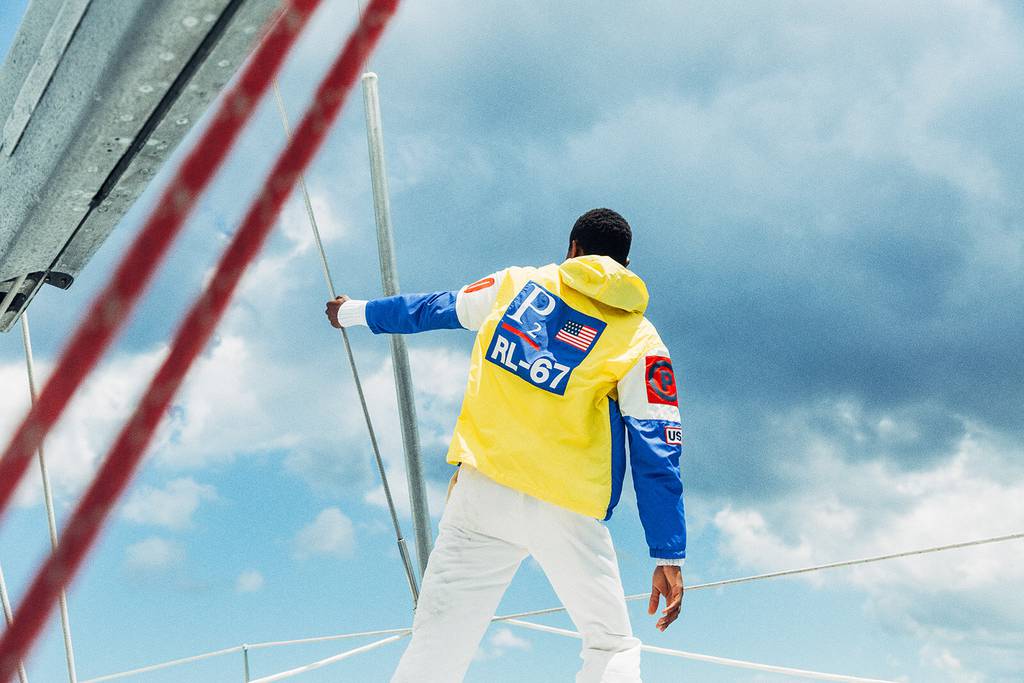
Wise sage Deion Sanders once put it eloquently, “If you look good, you feel good. If you feel good, you play good. If you play good, they pay good.” While the multi-sport athlete was being a bit tongue-in-cheek in breaking down what it takes to be excellent at sports, there’s something to the idea of using fashion to elevate one’s performance.
Although countless heritage brands along the way have helped elevate athletes’ self-confidence — both through the actual duds on their back and as sponsors of major sporting events — few have done it as long, and as effectively, as Ralph Lauren. Realized in various iterations of the brand itself, Ralph Lauren not only served the athletes themselves through technical innovation, but also created a template for inclusivity rarely seen when examining both the sartorial and sports world.
“Polo simply aligned with Ralph Lauren’s own personal desire for his eponymous brand to represent a sporting attitude from the outset.”

In the early days, the Polo moniker could have been perceived as an indication of a rigid sense of exclusivity between the wearers of the brand and those on the outside looking in. However, the name itself wasn’t buoyed by a country club ethos. “Polo” simply aligned with Ralph Lauren’s own personal desire for his eponymous brand to represent a sporting attitude from the outset. As children growing up in the Bronx, Ralph and his brother, Jerry, weren’t necessarily enamored with organized sports. Yet, pick up basketball games were embedded in their childhood like the sound of Mister Softee’s ice cream truck. In TIME, Lauren once joked about the origins of his brand’s name, saying, “I couldn’t call it ‘basketball.'”
Opting for “Polo” — even though he himself never played the equestrian-fueled game — the desire to reach the mass market through an athletic lens was clearly defined in one of the brand’s earliest slogans: “Every team has its color – Polo has seventeen.”
“Ralph Lauren aimed to design with a new athletic spirit that had the regality of the Olympics but was suitable for wearing on the streets.”

It seems apropos to begin with 1992’s Polo Sport collection. Revolutionary for consumers, designers, and other brands alike, Polo Sport was a solid departure from the crisp collared shirts that had grown Ralph Lauren into a certifiable fashion juggernaut. But it was not without its risks. The genesis of Polo Sport came a year earlier in anticipation of the forthcoming Summer Olympic games in Barcelona. The inclusion of the United States’ basketball team — also known as “The Dream Team” — promised to make the festivities particularly grandiose as people imagined a Magic to Bird to Michael-kind of assist that defied the laws of both physics and gravity.
Ralph Lauren aimed to design with a new athletic spirit that had the regality of the Olympics but was suitable for wearing on the streets. Bold, colorful, and with a mix of sporty graphics and symbols like the P-Wing logo, the design team came up with the now iconic Stadium line. The brand quickly succeeded in connecting the sports world and the streets — and, as a result, products like the striped sweater and track jacket acquired nicknames such as the “Freddy Krueger” and “Babe Ruth” respectively. Suddenly, and perhaps shockingly, men in boardrooms and teens in Brooklyn found kinship in the Polo brand. While the former was a demographic Ralph Lauren had already reached through their khakis and polos, the latter (known as Lo Heads) came to be the first street-style influencers of the era.
“The seeds were planted for what we now recognize as the blurred line between high-fashion and street culture.”

The product line was assuredly strengthened by two key factors. The first was a dedicated Polo Sport store on Madison Avenue and opposite Ralph Lauren’s famed Rhinelander mansion. The New York Times acknowledged that the decision to create a dedicated space for a diffusion line addressed, “[the] most elusive luxury of the ’90s: leisure time.” The retail space — inspired by ski lodges, yachts, Bugattis, and beach houses — bear the same grandiose aesthetics now associated with pop-up experiences. At the time, clothing usually sold on reputation amongst peers. However, the Polo Sport store went a long way to sell people on the clothes on its racks.

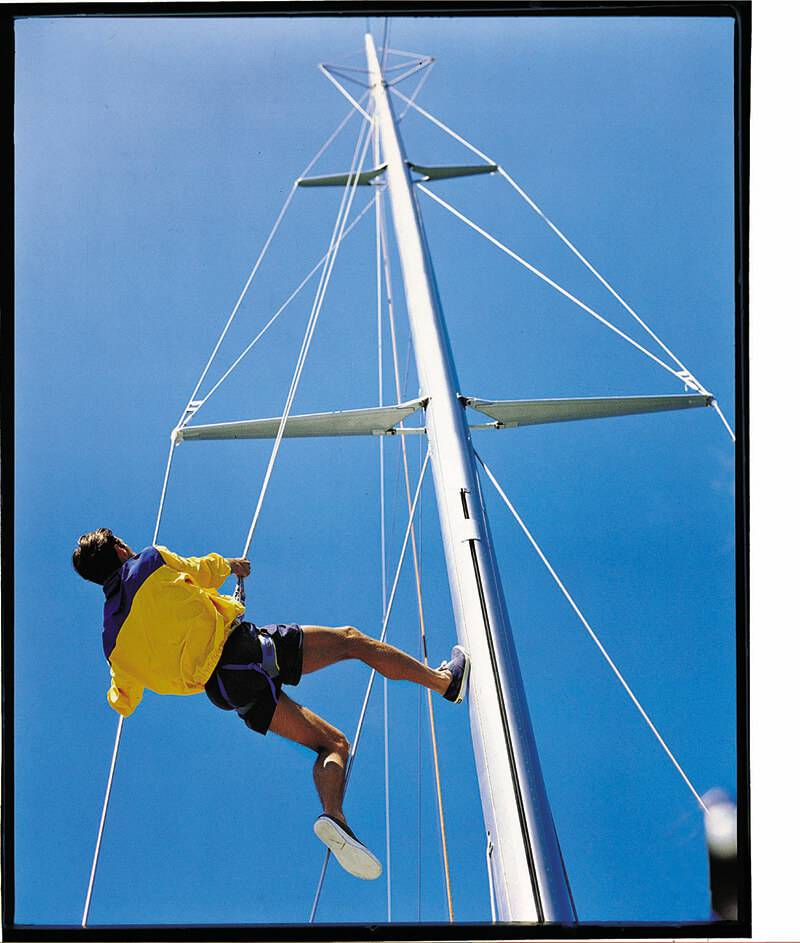
The second important factor was the collection campaign. Not only was it unlike any other Ralph Lauren campaigns featuring sun-kissed models like surfer Buzzy Kerbox, but it awakened the notion that an upstart black model like Tyson Beckford — who was discovered in Washington Square Park by an editor from The Source — could ascend to “supermodel” status. Thelma Golden, curator of “Black Male: Representations of Masculinity in Contemporary American Art,” likened Beckford’s inclusion in the campaign to Jackie Robinson eliminating the color line in baseball, adding, “Ralph Lauren has used black models here and there, but nothing has ever been as daringly black as that Polo ad. Tyson looks like a brother on the block. There is a quality of ultrarealness about him.”
The success of Polo Sport’s launch continued the following season. Whereas the 1992 collection represented a sporty — yet upscale — version of a summer uniform, the new season required a cold weather alternative. Lauren identified the burgeoning snowboarding culture as the perfect conduit and, instead of opting for official sponsorships with riders or contests of the era, Ralph Lauren allowed the collection to spread organically through action sports.
The SNOW BEACH/COLD WAVE collection was a vibrant and offbeat activewear showcase. The pop colors were liked to those of burgeoning urban brands like Cross Colours while more muted, earthy tones were a nod to the autumnal hues of Ralph Lauren polo shirts. Even the clothing’s dimensions spoke to the duality of the collection; baggy clothes were all the rage at the time due to the popularity of hip-hop, and snowboarders had in the past taken to wearing oversized pants so they would fit over their boots. When collectively merged, the results were harmonious.
“As one of the few brands that understands representing sporting culture shouldn’t just be a trickle-down effect, they aggressively nurture at the sub-cultural level.”

The collection debuted alongside three other sport-inspired concepts: RL2000, Urban Ball, and Sportsman. In all three, the brand used sport-leaning fabrics like Polartec, coated nylon, and waterproof canvas which today brands embracing elevated athleisure like GOLDWIN and Arc’teryx Veilance continue to use.


SNOW BEACH registered most greatly with impressionable young people. While it may once have been impossible to equate Ralph Lauren with hip-hop culture, Polo Sport seemed like the perfect match — specifically aided by none other than Raekwon of Wu-Tang Clan. As the story goes, the Chef was shopping for clothes at Abraham & Straus in downtown Brooklyn on the day the group was shooting the music video for “Can it Be All So Simple” from their album, 36 Chambers, when a Snow Beach parka caught his eye. “I was always a fan of Polo, but when I seen [sic] that, I felt like I was the only one who had it,” Raekwon said in a 2015 interview. “So I jumped on it and wore it in the video. Next thing you know, the jacket became famous.”
Of course, the Snow Beach parka was just one of many sport-inspired pieces to gain notoriety in subsequent years. Whether it was the Ski ’92 Turtleneck, Ski ’92 “Suicide Jacket,” Golf Polo Shirt, “Silver Surfer,” or Football Rugby, the brand clearly placed emphasis on an active lifestyle. Even adding references to runway shows where models glided across the catwalk in rollerblades.
Polo Sport’s influence on past and present fashion successes can’t be oversold. Not only did it inform Shawn Stussy’s decision to form “Stüssy Sport” before departing his namesake brand, it also encouraged designers like Neil Barrett to pitch an elevated athletic concept to Prada (which was subsequently mimicked by other brands such as Dior Sport and Burberry Sport). Slowly, the seeds were planted for what we now recognize as the blurred line between high-fashion and street culture.
“While hyped collaborations like Ralph Lauren x Palace may acquire notoriety, it’s important to remember the creative currency behind the brand itself.”

As important as the aforementioned collections were, Ralph Lauren wisely acknowledged that they could supplement their organic buzz with tangible activations. During this era, the company became the official outfitter of San Diego’s America’s Cup (the oldest and perhaps best known international yacht racing competition). A year later, following the US’s win, Ralph Lauren released the nautical-inspired CP-93 collection that was yachtwear for those without sea legs (which was re-released in 2018).

Having proven the ability to design for both hot and cold weather situations, it seemed only natural for the brand to seek out one of the world’s more high-profile design gigs: outfitting Team USA at the Olympics. Whereas brands like Halston, Levi’s, J.C. Penney, and Roots had become synonymous with the honor in the ‘80s, ‘90s, and early 2000s, Ralph Lauren entered the fray in Beijing in 2008.
Inspired by the glory days of Jesse Owens — in an era before tracksuits became the uniform of all Olympians — Ralph Lauren avoided past disasters like the boot-cut jeans and cowboy hats in Sarajevo and blue blazers, stars-and-stripes ties, and white floppy Panama hats in Barcelona. Instead, the looks ranged from classic polo shirts with graphic Chinese lettering to tennis and cricket sweaters paired with ties. Some of the decisions caused an uproar — specifically the size of the Polo emblem in relationship to the Olympic rings on the navy blue sweaters. Although preppy in its execution, the popularity of Snow Beach clearly informed the decision to opt for something in your face and grandiose. The Big Pony logo has since been associated with product collections tied to sporting partnerships with the U.S. Open and Wimbledon.
Ralph Lauren has since designed Team USA outfits for the Olympics in Vancouver, London, Sochi, and Pyeongchang. The latter was perhaps the most technologically daring, utilizing conductive carbon and silver inks to produce self-heated jackets for frigid temperatures — laying the groundwork for PoloTech which debuted in 2016. “When technology and fashion merge with a real need and a purpose, that’s very exciting,” said David Lauren, the brand’s chief innovation officer.


The Olympic Games is as extravagant a sporting platform as it gets for a design team, yet Ralph Lauren has managed to perfectly balance inspirational with aspirational. As one of the few brands that understands representing sporting culture shouldn’t just be a trickle-down effect, they aggressively nurture at the sub-cultural level. Whether supporting Paralympic sled hockey or an African American female bobsledder from Chicago, their support is unwavering.
“By challenging the status quo along the way, Ralph Lauren has helped redefine what it means to be a brand at every basic level.”

Similarly, they’ve continued to bridge the gap between sport and fashion through inventive ad campaigns. Members of Philadelphia’s Work to Ride — which facilities a program between underprivileged youth and equestrian sports — has produced note-worthy names such as Daymar Rosser, Kareem Rosser, Shariah Harris, and Malachi Lyles. Given the opportunity by Ralph Lauren, the sport of polo unlocked something within them that may otherwise have remained untapped. While hyped collaborations like Ralph Lauren x Palace may acquire notoriety, it’s important to remember the creative currency behind the brand itself.
Few brands can tie together the likes of LeBron James, the Wu-Tang Clan, New York Yankees, and Olympic Games — throw in some valiant steeds for good measure and it has the makings of a vaudevillian joke. Yet, Ralph Lauren has accomplished this rare feat and more by becoming the first luxury brand to launch an extensive sportswear collection while also acknowledging the past through retro releases and nostalgia-fueled collections like Polo Sport Denim and Polo Sport Silver. By challenging the status quo along the way, Ralph Lauren has helped redefine what it means to be a brand at every basic level. “It was streetwear for sport,” Fear of God’s Jerry Lauren said. “A quarter-century after its launch, it’s never felt better.”

Game, Set, Match
The story of Ralph Lauren at Wimbledon.
It’s hard to remember a time when Wimbledon’s umpires, linesmen, ball girls, and ball boys weren’t wearing Ralph Lauren. Like strawberries and cream, Henman Hill, and an ice-cold cup of Pimms, one struggles to picture Wimbledon without Ralph Lauren’s official styling. Yet — a testament to Lauren’s visual language and mastery — the brand has only been outfitting the world’s oldest tennis tournament since 2006 when the All England Lawn Tennis Club made it the first clothing brand to be exclusively associated with the tournament.


It was no simple feat for Ralph Lauren to transform Wimbledon’s uniforms. The Championship, as it’s more formally known, has a famously strict dress code. While spectators have a little more freedom, competitors practicing or playing a match must be dressed almost entirely in white from the moment they step out onto the court. “White” does not include off-white or cream and the rules cover everything from shirts and dresses to caps, shoes, undergarments, and even medical supports and equipment. While color trims are permitted, they can be no wider than 1cm.


Until 2006, the uniforms of on-court officials were equally limited, and certainly not stylish. Wimbledon’s signature green and purple colors stood out but the palette was predominantly functional, helping officials blend in with their surroundings and not distract players.


Ever the rule-breaker, Ralph Lauren fought to make navy blue the uniform’s primary color instead, with green and purple adorning the trimmings, logos, and ties. Umpires continue to wear sleek suiting while ball girls and boys wear the classic Ralph Lauren Polo, also in navy. In comparison to the old uniforms, Ralph Lauren’s designs give officials a greater sense of identity. Lauren, in fact, wanted to dress them in all-white like the players, but this was deemed too distracting.

Lauren has done much the same for Wimbledon as he did for the American wardrobe. Noah founder Brendon Babenzian explains that Ralph Lauren captured the American identity and expanded on it: “There was the reality of prep style, and then there was Ralph’s version, which was suped-up. More interesting, and more fun.” Similarly, Lauren took the rather plain and purely practical uniforms of Wimbledon’s officials and made them exciting, a talking point even. In place of American identity, Lauren — admittedly obsessed with English culture — drew upon archival photos of Oxford and Cambridge University students playing the lawn sport. And, of course, it wasn’t the first time the designer had reimagine a quintessentially British sport — the primary difference being that the first time around he named his brand after it.


Lauren has done much the same for Wimbledon as he did for the American wardrobe. Noah founder Brendon Babenzian explains that Ralph Lauren captured the American identity and expanded on it: “There was the reality of prep style, and then there was Ralph’s version, which was suped-up. More interesting, and more fun.” Similarly, Lauren took the rather plain and purely practical uniforms of Wimbledon’s officials and made them exciting, a talking point even. In place of American identity, Lauren — admittedly obsessed with English culture — drew upon archival photos of Oxford and Cambridge University students playing the lawn sport. And, of course, it wasn’t the first time the designer had reimagine a quintessentially British sport — the primary difference being that the first time around he named his brand after it.

Ralph Lauren’s involvement in Wimbledon has meant on-court officials now look as suave as some of the tournament’s high-profile spectators, bringing a whole new dimension to its fashions. It’s an effect Ralph Lauren has had time and time again on the way various cultures dress, from Ivy League schools to the streets of Brooklyn. And while Lauren has been ever-present for the last 50 years, its impact is being felt particularly strongly again today as streetwear continues to mature and preppiness regains relevance — evidenced by the slow return of the suit and growing interest in Ralph Lauren-inspired brands such as Rowing Blazers.

by Design
Sportingby Design
The Dropcast
The Dropcast Roundtable: Ralph Lauren’s Influence on Sports
In this special edition podcast, Highsnobiety sits with The Good Company’s Kumasi Sadiki and Paterson League’s head of brand, German Nieves, to discuss Ralph Lauren’s sporting heritage, how it’s influenced tennis style at Wimbledon, and its impact on the wider world of sport.
Behind the Bear
A closer look at an undisputed sporting and style icon.
The quintessentially British polo player and pony perfectly fit Ralph Lauren’s preppy, Ivy League, country club aesthetic. But Ralph’s reach extends far beyond the lawn’s of elite schools. To that tune, the brand needed a mascot with more universal appeal, something fun and something unequivocally lovable.
According to legend, the Polo Bear was born when Ralph Lauren’s design team gifted him a Steiff bear wearing a miniature teddy-bear-sized Polo outfit. Enamored, Lauren worked with Steiff to produce a limited run of 200 bears that flew off the shelves of his Madison Avenue flagship store. Not long after, Lauren began using the bear motif on clothing and, in 1991, Ralph Lauren released the first Polo Bear sweater.
The Polo Bear is a symbol of everything Ralph Lauren represents and somewhat of an idol. We spoke to leading menswear figures, brand founders, and committed Lo-Lifes to get the insider scoop on the bear’s impact. Here’s what they had to say.
Fashion designer & vintage collector

“The bear is a caricature of Ralph himself. The ironic urban cowboy combining styles from the working class streets to Aztec fringe, playing dress up the same way Ralph does. The bear sweater in the early ‘90s was a return to this old-world childhood romanticism. Ralph influenced grown, sophisticated, masculine, mature, hip-hop focused men to return to their adolescence by wearing a cute Teddy Bear. Clothing customizers like myself loved the Polo Bear bed sheets so much that we started cutting them up to make our own bear items. I custom made pocket tee shirts, bucket hats, and even a Polo Bear couch.
The bear in black on skis was named “The RL 2000 Bear” by Lo Heads and Polo collectors because the bear’s gear looks reminiscent of the RL 2000 collection from 1994 — the pants look exactly like RL 2000 ski pants. When this bear was released, most bears were Teddy Bear-esque, sitting still like stuffed animals; the RL 2000 Bear was in action, in motion, and more human like.”

“The Polo bear is all of us. It’s genderless, raceless, timeless, seasonless. You don’t have to be ripped, in great shape, or skinny to be the bear. You don’t have to be a certain age, from a certain place, or rich. You just need to have style. What kind of style? Any style: elegant, formal, street, western, ‘90s, sporty, classic, apres, lumberjack, artsy. And that’s why the bear is such an icon.
This bear speaks to me the most because I was on team USA — and I’m always wearing white pants. More importantly, this is how my dad would dress to play basketball with me in the driveway when I was a kid in the 90s and that’s what it reminds me of to a tee!”

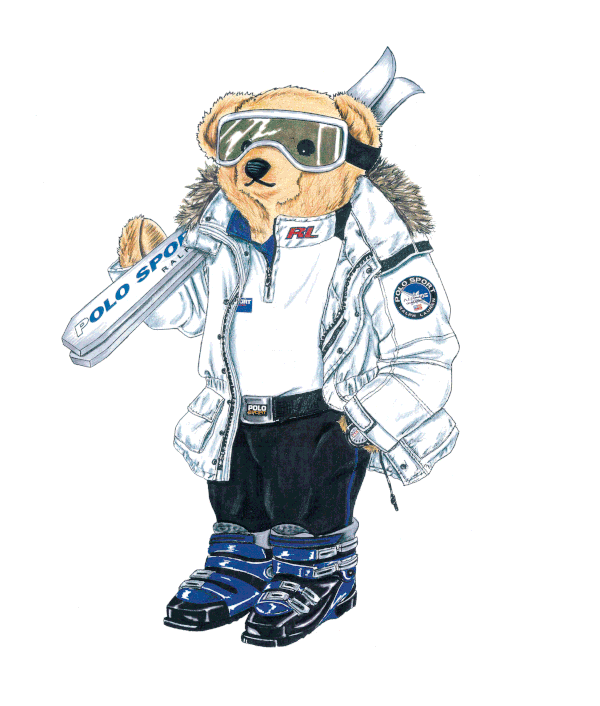
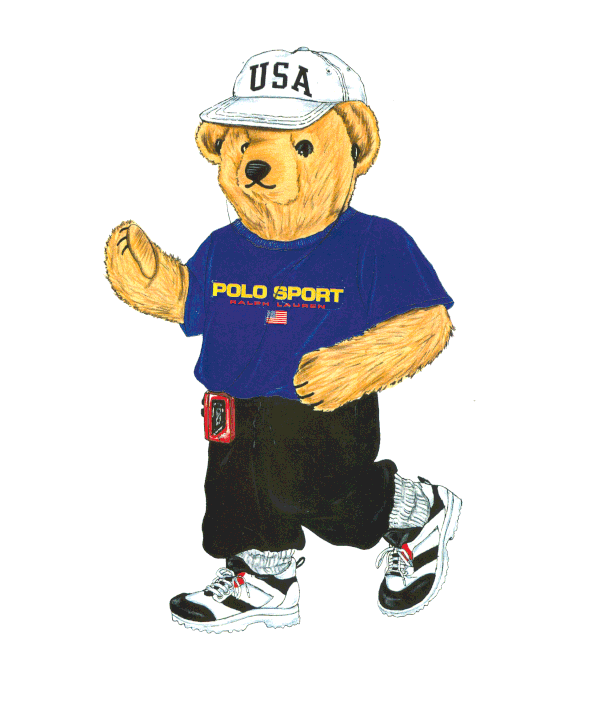
Lo-Life founder, rapper, author, producer, director, actor, and hip-hop and fashion historian

“The bear was basically the mascot for polo and came from a totally different direction from Ralph Lauren. The concept has been imitated and duplicated by many brands both commercial and independent. I have no one favorite bear but they all are pretty cool, especially on the knitted sweaters.”
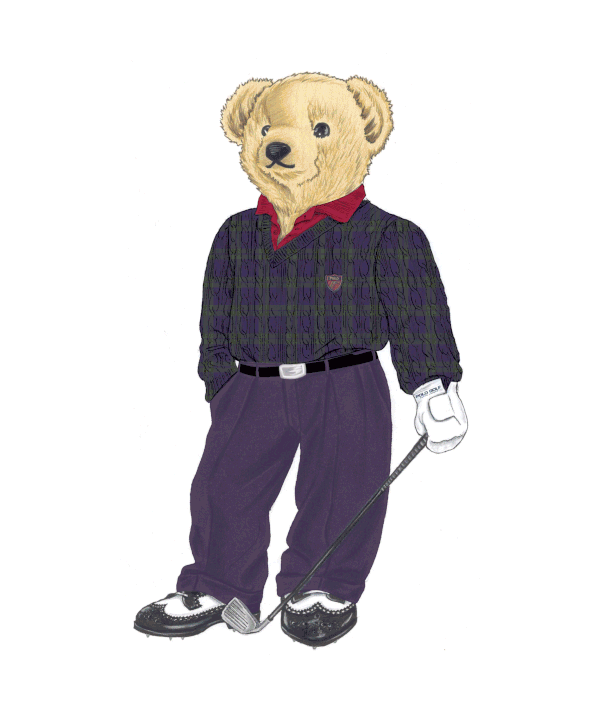
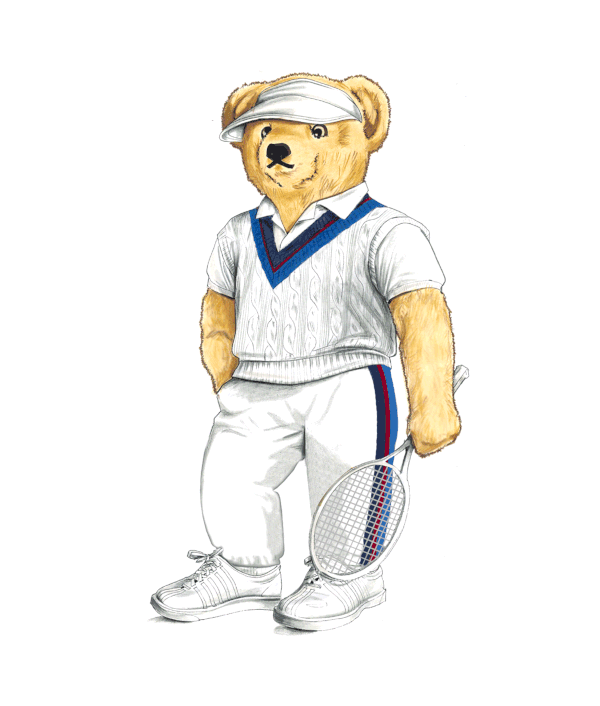
Simon Hogeman
Très Bien, co-founder & head of buying
“The Polo bear is the absolute opposite of the even more iconic polo player logo. While the horse logo sends the message of luxury, upper class elitism, the Polo bear is more inclusive, warm, and fluffy. In my book, it’s way cooler in all its cheesiness and silliness.
I love the polo player bear because it was such a big part of Kanye’s breakthrough and at that time there were less social media channels, so some images really stuck. That one had a big break mid-2000s because of that too and really raised awareness for the bear.”
Lo-Life, author, entrepreneur, and creative director

“Ralph Lauren’s fashion genius comes into play with the choosing of versatile garments and themes he places on the bear. These items are what caught the eyes and attention of the inner city youth. Just like Rack-Lo and the Lo Lifes started a “pendulum effect” as fashion extremists, the bear’s dress styles and codes went from one extreme to the next.
The executive bear resonates with me because I dress how I live my life at this particular point in time and, for me, it is all about business, remaining family oriented, being entrepreneurial, and making executive decisions to improve the lives of others and to make the world a better place.”
Sports
AlternativeSports
Land of the rising ‘LO
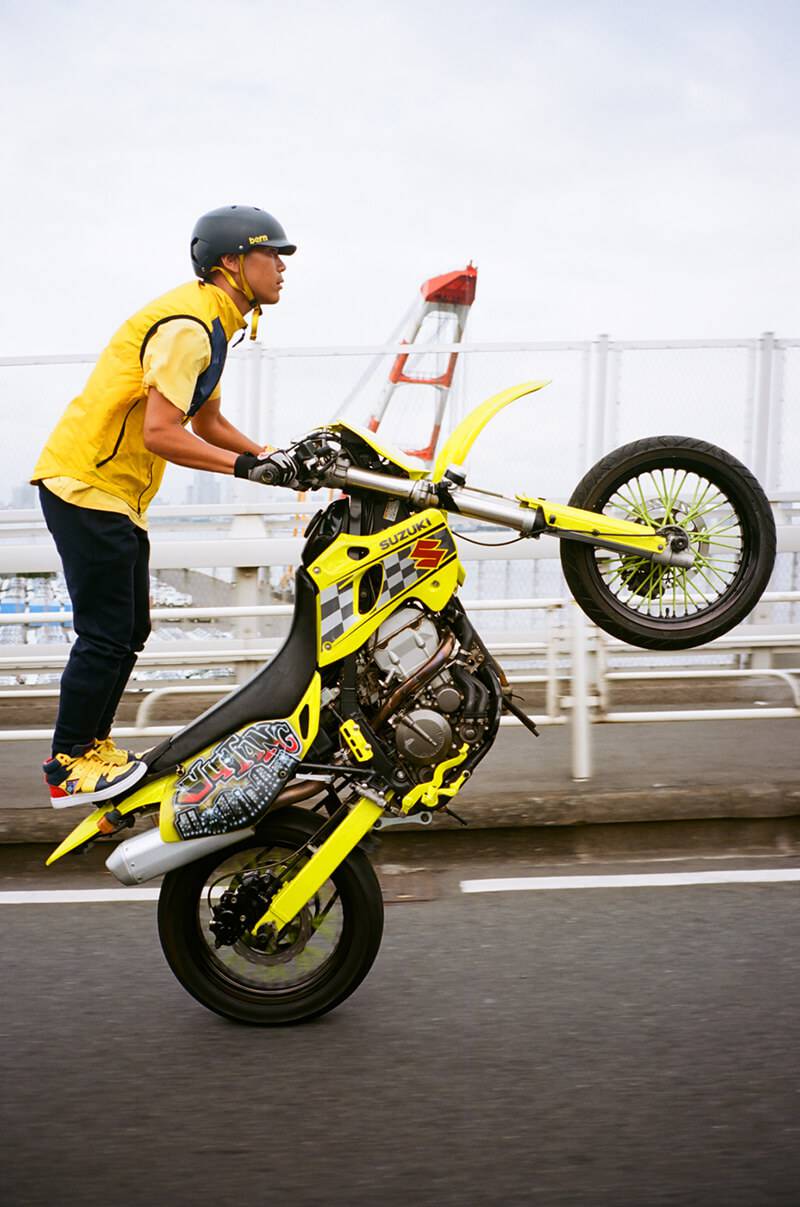
To say Ralph Lauren has touched cultures in every corner of the globe isn’t an exaggeration. New York and Tokyo might be almost 7,000 miles apart but that hasn’t stopped Japanese Lo-heads building collections to rival those of their Brooklyn-based counterparts.
Motorcyclist Yu-Tang is obsessed with two things: motorbikes and Ralph Lauren. In our first video interview, we follow the Urban Ryders bike crew founder through the streets of Tokyo and see just how far Ralph Lauren has traveled.









Polo Skate
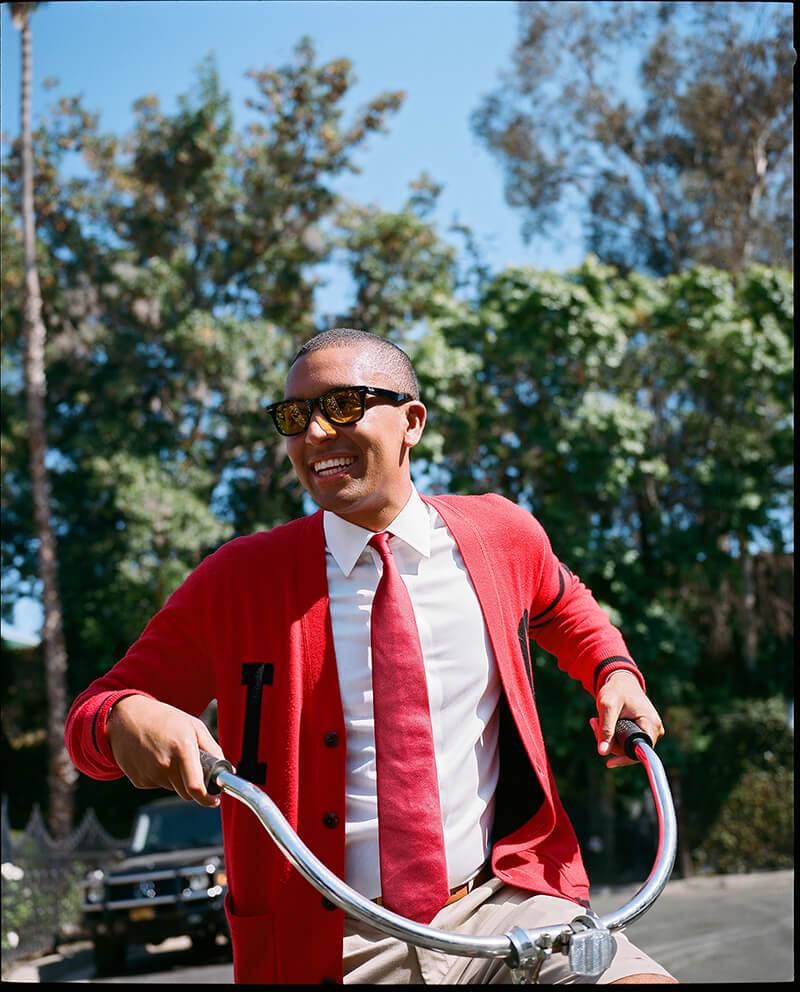
While a number of clothing brands come to mind when you think of skateboarding, Ralph Lauren might not be the first. Yet, skating and Lauren have a storied history and deep connection, from ’90s East Coast skaters repping POLO to contemporary skate clothing repeatedly referencing the brand.
Mikey Alfred is a film director as well as the founder of LA-based skate crew and brand, Illegal Civilization — he’s also a Ralph Lauren fanatic. In this video interview, Alfred talks about Ralph Lauren’s impact on himself, skate culture, and his next project after working as co-producer on Jonah Hill’s Mid90s.









